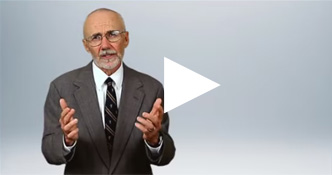Should Your Nonprofit Leader Be Remote? 5 Considerations.
The Moran Company is an executive search firm that specializes in filling both in-office and remote nonprofit leadership positions. The events of recent years have brought many changes to the labor market. Over time, some of these changes have proven impermanent, but others seem to be here to stay – and nonprofit boards should consider them the next time their organization is facing a leadership transition.
As a search consultant, the biggest change I have witnessed is a growing consensus that an organization and its staff team can be just as effective in a virtual capacity. Since 2020, many of our nonprofit partners have eliminated their physical offices and opted to build a remote team environment. Hybrid work environments have grown, as well. This has allowed a shift in their investment, allowing a broader geographic view of the candidate pool for open positions, plus new ways of building team relationships while ensuring the organization is meeting the mission.
As the decade continues, staff have come to expect some degree of flexibility in the work environment. Sometimes remote leadership is not an option, but employers will want to be mindful of and responsive to this expectation in a way that allows the organization to effectively deliver its programs and services to its clients. This article offers considerations for nonprofit boards as they evaluate whether their next hire should be in the office or remote.
If your organization is facing a leadership transition, are you offering a work environment that is appealing to top quality staff? Is your organization ready for a remote or flexible/hybrid staffing structure? Here are some things for you to consider as you assess your remote readiness.
- Your Governance. How is your organization governed? Is your board local? Regional? National? How often and in what capacity do you meet? If the board is able to effectively function without regularly meeting in person, consider if your staff team can do that as well.
- Your Service Delivery Model. Are your services offered face to face? How often? Direct in-person services offered daily certainly require on premises or hybrid staffing. It would be difficult to recruit a leader who lives in a different geographic location for this role. Even so, many direct service missions are using technology in new ways, incorporating virtual appointment options or other communication tools to interact with customers and other stakeholders, adding value for both your clients and your team.
- Your Universe of Customers. For organizations with a regional or national focus, being in an office every day may not be relevant. This can be especially true for fundraising leadership positions, where the expectation is that the staff will be out meeting the donors where they are. We have worked with several nonprofit partners to fill fundraising positions recently, in which the fundraiser would be working directly with donors. In these cases, the organizations offered meeting space at the office as needed but expected that the development leaders would be working primarily from home and in the field, with no permanent office space to visit daily. This also allowed the nonprofit to select from a more geographically broad candidate pool and even grow donor support in new regions.
- Your Staffing. What does your staffing structure look like currently? Do any of your team members work remotely part or all of the time? It is certainly important for the organizational leadership to be physically present – for staff morale, trust and relationship building. How will the new leader fit with the staffing structure? We recently worked with a nonprofit partner that had grown to a largely remote environment since the pandemic but was wrestling with what the ideal environment for a new leader should be. Should the new leader be in the office, even with a largely remote staff, and be the person to change the tide of the office culture? Or is the remote culture here to stay? Their decision set the tone for the future of the organization.
- Your Hiring Expectations. Where is your organization located? What are the attributes you are looking for in this position? Do you think the skills and experiences you are seeking can be found in your geography? What would it mean if you broadened your review? What would you gain? What would you lose?
There are many things to consider in the hiring process. An executive search partner like The Moran Company can help you think about the skills and attributes you need in your next leader, including how and where the position is organized. Contact us to schedule a conversation to learn more, and view some of our past articles on this important topic including: “Is Having a Nonprofit Executive Work Remotely a Good Option to Consider When Recruiting?” and “Remote Staffing: A Definite Trend in Nonprofit Executive Search”.
By Mary Ontko, M.P.A.
Senior Vice President & COO
The Moran Company
“We Find Great Nonprofit Leaders”
Posted in Executive Search Articles
Subscribe
Join more than 10,000 nonprofit professionals, community leaders and board members who receive e-mail updates from The Moran Company.






